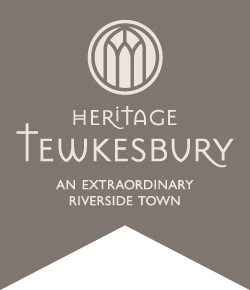Tewkesbury Heritage & Visitor Centre
The Heritage & Visitor Centre is a great place to start your visit to Tewkesbury. Learn a little about the town's history and use the visitor centre to help plan your trip.
Read more
One of the great ways to discover the countryside is by walking. Discover the new Pilgrimage Walk between Tewkesbury Abbey and the historic churches at Deerhurst, Stoke Orchard and Tredington.
Keen walkers may wish to walk the loop in one day, however this triangular walk can also be completed in 3 individual easy stages.
Click HERE to download the walk or call into Tewkesbury TIC to collect a hard copy. Donations welcome
Tewkesbury Abbey
The Abbey Church of St Mary the Virgin, is commonly known as Tewkesbury Abbey
Considered one of the finest examples of Norman Architecture in Britain, it has the largest Romanesque crossing tower in Europe.
Tewkesbury had been a centre for worship since the 7th century and a priory was established here in the 10th century. Although the Abbey was founded in 1087 by Nobleman Robert FitzHamon, the building of the present Abbey did not start until 1102. Built to house the Benedictine monks, the Norman Abbey was near completion when consecrated in 1121.
After the Dissolution of the Monastries, in 1540 Tewkesbury Abbey became the parish church for the town and was sold to the parishioners for £453
The church of St James the Great
The church of St James the Great dates from around 1160
This remarkable little Norman church has the earliest and largest mural cycle dedicated to the life and martyrdom of St James to be found in Europe today. The church was formerly a Chapelry of Bishop’s Cleeve, which in the Middle Ages belonged to the Cathedral Priory of Worcester.
The principal feature of the church is the remarkable series of paintings; the earliest over 800 years old, which cover the walls of the nave
The Parish Church of St Mary
St Mary’s church is one of the finest and most complete buildings in England to survive from before the Norman Conquest. Its architectural history is complex and is still much debated by architectural historians, but a substantial part of the building is now considered to belong to the first half of the 9th century, the period of Æthelric’s bequest.
There is some magnificent Anglo-Saxon sculpture, much of it of the 9th century. This includes the famous angel in the ruined apse and a series of carved beast-heads, including two at the west end and two on the chancel arch. The font also belongs to the 9th century and a statue of the Virgin and Child (originally painted) near the entrance is likely to be of a similar date.
Odda’s Chapel
Deerhurst’s second Anglo-Saxon church is a single two-cell building of nave and chancel. It was built by Earl Odda in memory of his brother Ælfric It is dated 1056 by an inscription which is now in the Ashmolean Museum in Oxford.
Tredington Church
The church is dedicated to St. John the Baptist. The main body of the church was built in the twelfth century, though it is possible that the chancel was partially rebuilt in the thirteenth century.
The name of the village, ending in ‘ington’, shows that there has been a settlement here for a thousand years or more. The Domesday Book gives it the name ‘Trotintune’. Before the Dissolution of the Monasteries under King Henry VIII, the village was part of the Manor and Parish of Tewkesbury, the church originally a chapel of ease to Tewkesbury Abbey.
The number of Tewkesbury's buildings listed as being of special architectural or historical interest totals more than
30 alleyways exist in Tewkesbury today - there were once
In 2021 Tewkesbury celebrated two big anniversaries; 900 years since the consecration of the Abbey and 550 years since the Battle of Tewkesbury. The town will have plenty to celebrate